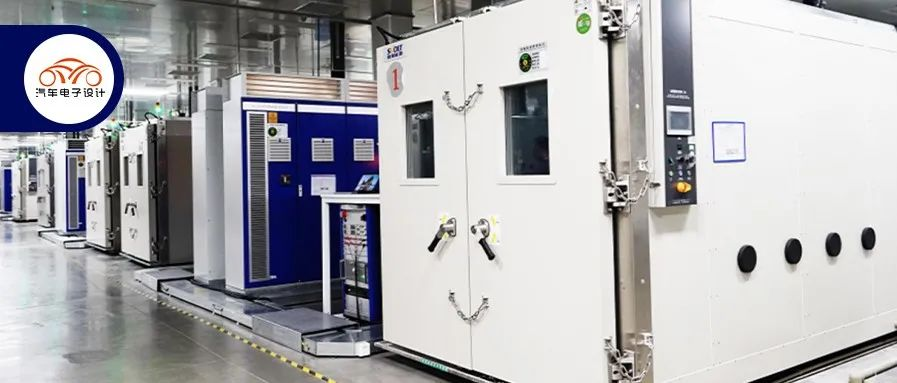Author: Zhu Yulong
A few days ago, I had the opportunity to visit the Fincar Energy Solid-state Laboratory, Testing Center, and Safety Laboratory in Wuxi.
This was a systematic presentation by Fincar Energy of its battery core development and testing verification. The battery core is the “heart” of an electric vehicle’s power battery, and its quality determines the safety, performance, energy, charging capacity, and service life of the entire power battery system. Developing battery cores is also the most important capability of a battery enterprise. For a car, 80% of the cost of the power battery pack comes from the battery core (currently possibly more than 85%), and 80% of the cost of the battery core is spent on battery core materials. The core competency of a battery enterprise is continuous development and optimization of their products.
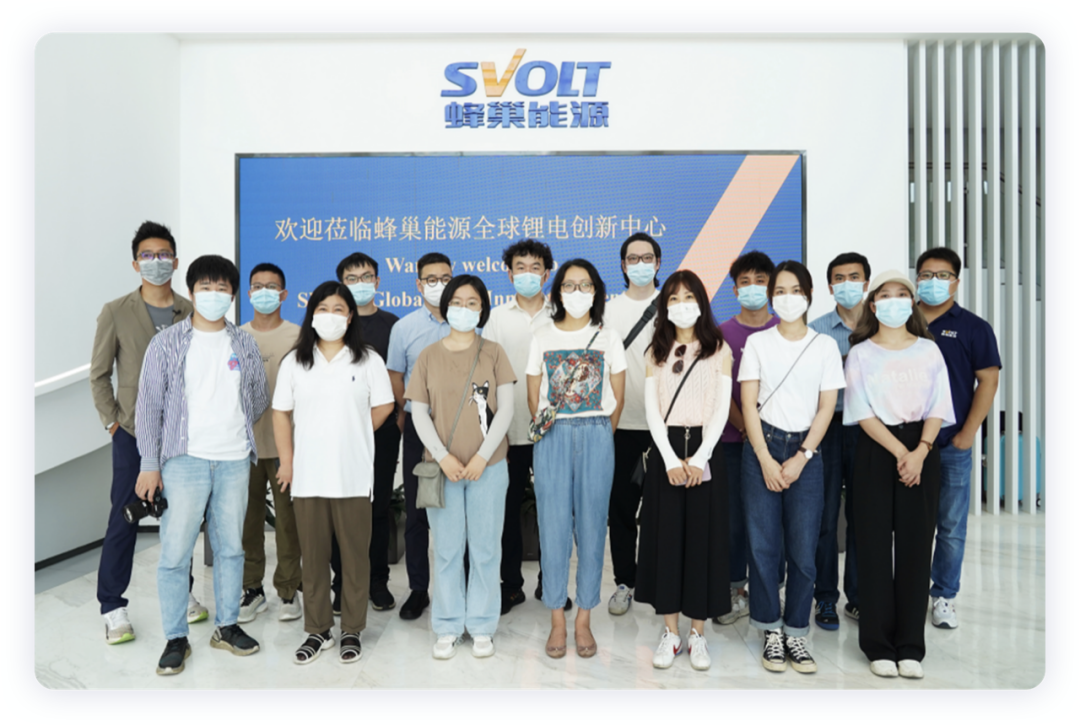
First, let’s take a look at the research and testing capabilities of the Wuxi Innovation Center.
The Role of Battery Development Technology Center and Testing
For a battery core enterprise, the front-end research and development center not only needs to test battery core samples, but also needs to have the ability to develop materials, conduct technical experiments, and produce small-scale sample batteries. In this way, they can develop battery core technology and gradually determine the performance of the battery core prototype samples. The battery prototype from the pilot line and the testing conducted in the research and development center are key for battery engineers and development departments to analyze and understand the process of creating the battery, and they help improve research and development efficiency for experts in different fields.
The battery core research and technology center covers the research and development department of battery core raw materials, the design of battery core structures, the production line for battery core samples, and the laboratory for battery core testing. The research on the formula for battery core raw materials is crucial, as it can enable bulk production that ranges from the mixing, spraying, drying, and compression of positive electrode materials to the winding and stacking of positive and negative electrode layers and separators, and finally, to the assembly of the shell and the injection of the electrolyte.
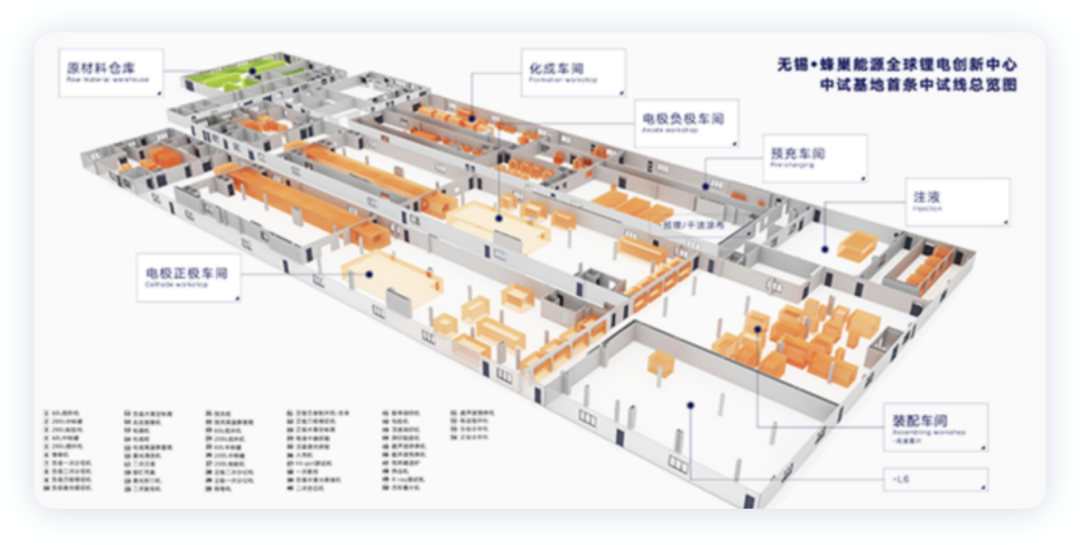 In the verification and testing of front-end battery products development process in Beehive, the full process testing capability mainly includes R&D of positive and negative pole materials and electrolytes, sample trial production, physical and chemical properties testing of battery raw materials, electrical performance testing of battery cells and packs, and safety performance verification. The battery cell system laboratory mainly conducts R&D on cutting-edge materials such as electrolytes, with testing capabilities such as uniform dispersion and coating of positive and negative pole materials, electrolyte formulation, physical and chemical properties testing, oxidation potential and other electrochemical testing. Taking the classic L600 battery cell as an example, according to the battery cell system laboratory’s test analysis, the battery cell formula has chosen a low viscosity solvent, which can improve flowability and electrical conductivity in low-temperature environment, thereby improving the low-temperature charging capacity of long battery cells and effectively solving the problem of range decrease in winter. The electrolyte also adds functional additives, which can form a high-temperature resistant film through negative pole aggregation reaction during the first battery charging, thereby avoiding harmful reactions between the negative pole and electrolyte, improving safety in high-temperature environment, and enhancing cycle life. The use of ceramic separators with excellent high temperature resistance and insulation can help improve the reliability of battery cells during puncture.
In the verification and testing of front-end battery products development process in Beehive, the full process testing capability mainly includes R&D of positive and negative pole materials and electrolytes, sample trial production, physical and chemical properties testing of battery raw materials, electrical performance testing of battery cells and packs, and safety performance verification. The battery cell system laboratory mainly conducts R&D on cutting-edge materials such as electrolytes, with testing capabilities such as uniform dispersion and coating of positive and negative pole materials, electrolyte formulation, physical and chemical properties testing, oxidation potential and other electrochemical testing. Taking the classic L600 battery cell as an example, according to the battery cell system laboratory’s test analysis, the battery cell formula has chosen a low viscosity solvent, which can improve flowability and electrical conductivity in low-temperature environment, thereby improving the low-temperature charging capacity of long battery cells and effectively solving the problem of range decrease in winter. The electrolyte also adds functional additives, which can form a high-temperature resistant film through negative pole aggregation reaction during the first battery charging, thereby avoiding harmful reactions between the negative pole and electrolyte, improving safety in high-temperature environment, and enhancing cycle life. The use of ceramic separators with excellent high temperature resistance and insulation can help improve the reliability of battery cells during puncture.
Importance of Equipment: Good Workmanship Relies on Proper Tools
Beehive’s equipment mainly includes the following parts:
- Physical and Chemical Analysis Laboratory: The Physical and Chemical Analysis Laboratory has more than 40 large-scale high-precision equipment, with up to 131 systematic testing capabilities, fully covering all testing requirements for material development, battery system development, battery mechanism, and safety analysis. It mainly undertakes the testing requirements of material development, battery system development, battery mechanism and safety analysis. The laboratory uses a “simultaneous thermal analyzer-gas chromatography-mass spectrometer” to precisely analyze material oxygen release and optimize the thermal stability of battery cells. The internal process control and failure analysis of the battery is completed by industrial CT. The X-ray is used to observe the internal structure and defects of the battery, such as alignment and wrinkles, and the monitoring precision reaches the nanometer level, thereby achieving in-depth research on battery failure mechanisms and manufacturing process control.
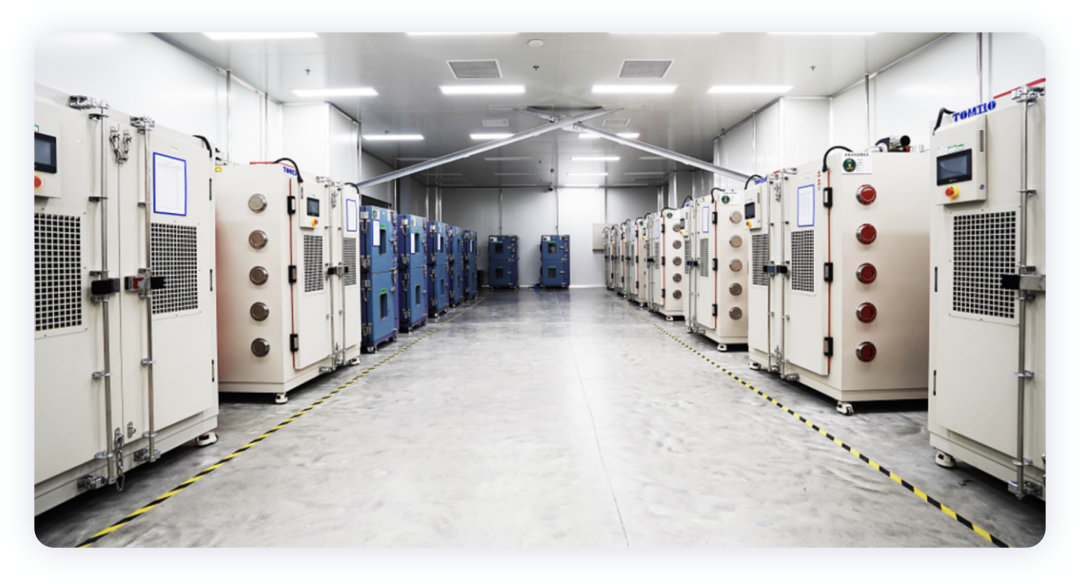 – The Electrical Performance Laboratory is mainly responsible for the verification of battery sample electrical performance, such as the capacity, energy, open circuit voltage and pulse charge-discharge capability at different charge/discharge rates, long-term cycling and storage life, self-discharge and other electrical performance, to determine whether the designed battery meets the design requirements. In order to ensure the accuracy of the tests, the cell energy’s cell performance test simulates the actual use conditions, uses a metal clamp to simulate the stress on the cell in the module or battery pack, and monitors pressure changes during charging and discharging, and integrates temperature, voltage, and pressure data acquisition. In addition, there is also a three-electrode test, using an auxiliary voltage channel to monitor the voltage of the positive and negative electrodes to metal lithium, to find the limit of battery use conditions, avoid the precipitation of metal lithium, and ensure the safe use of the battery.
– The Electrical Performance Laboratory is mainly responsible for the verification of battery sample electrical performance, such as the capacity, energy, open circuit voltage and pulse charge-discharge capability at different charge/discharge rates, long-term cycling and storage life, self-discharge and other electrical performance, to determine whether the designed battery meets the design requirements. In order to ensure the accuracy of the tests, the cell energy’s cell performance test simulates the actual use conditions, uses a metal clamp to simulate the stress on the cell in the module or battery pack, and monitors pressure changes during charging and discharging, and integrates temperature, voltage, and pressure data acquisition. In addition, there is also a three-electrode test, using an auxiliary voltage channel to monitor the voltage of the positive and negative electrodes to metal lithium, to find the limit of battery use conditions, avoid the precipitation of metal lithium, and ensure the safe use of the battery.
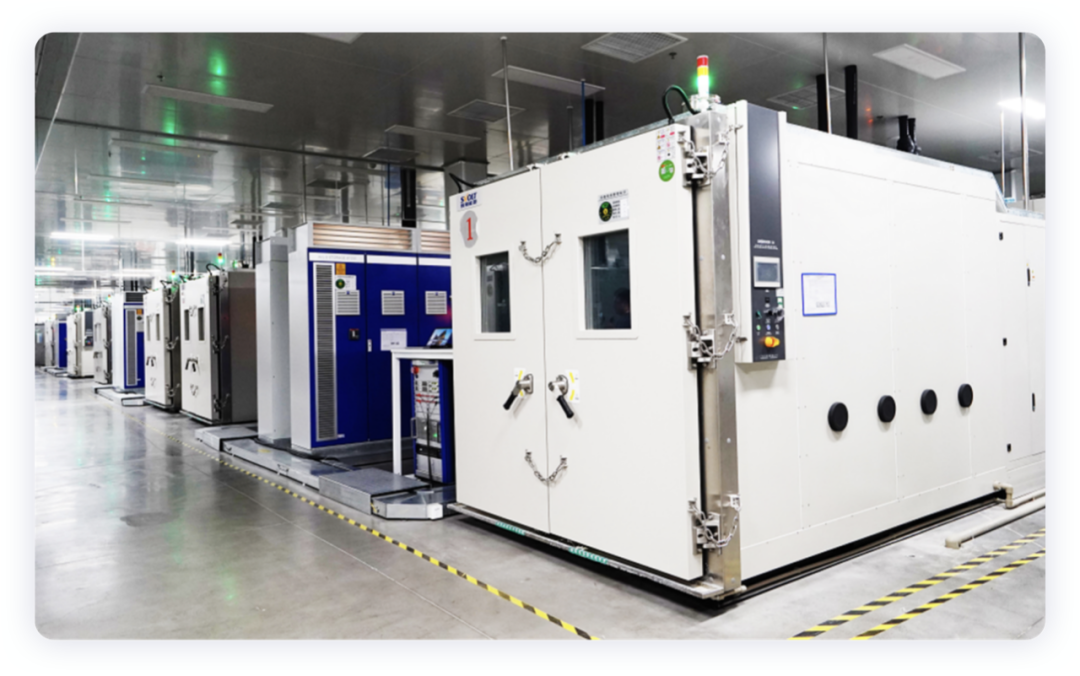
The battery safety verification method, the battery safety laboratory covers an area of 5,000 square meters, and has more than 30 sets of equipment, which can carry out reliability and abuse tests of mechanical, environmental, and electrical properties of battery monomers, modules, BMS, battery packs and systems. The purpose of safety testing is to verify the safety of the power battery system under abusive conditions. The most important purpose is to verify the ability of the power battery system to protect itself and protect passengers in case of danger. Here is also a complete internal construction of testing capabilities, which can quickly verify various safety characteristics of the battery.
The difficulty of needle puncture for power batteries is the greatest. In the needle puncture test of the short knife battery when fully charged, the short knife battery does not catch fire or smoke, and the temperature of the puncture point is not higher than 35 degrees Celsius. The L600 short knife battery has passed a systematic safety performance test, and its overall performance significantly exceeds the national standard, especially passing the needle puncture test smoothly, fully demonstrating the high safety quality of the short knife battery.
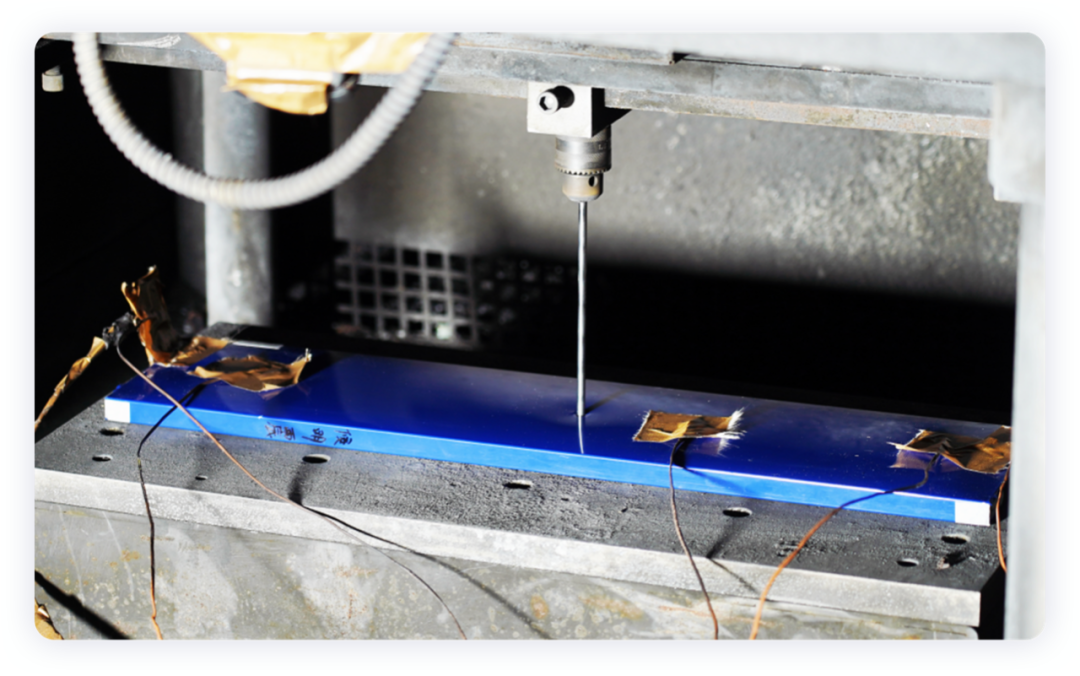
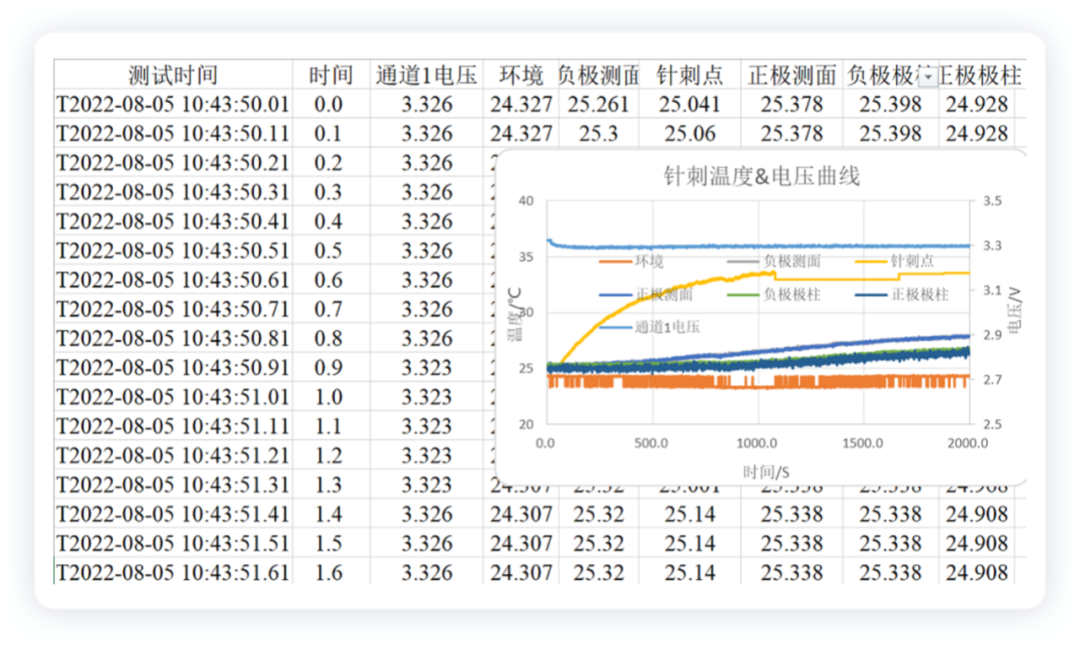
Sulfur-based solid-state prototype cell
The overall logic of the advanced development of global power semi-solid and all-solid batteries is the massive investment of passenger car manufacturers in the direction of electrification. This includes: continual investment in developing electric vehicle platforms, developing models, and transforming factories; and considering the battery needs while continually producing electric vehicles. Currently, European passenger car manufacturers (starting with Volkswagen) and American passenger car manufacturers (General Motors, Ford, and Stellantis) mainly lay out their plans by building battery companies.- Volkswagen Group is partnering with Quantum Scape and plans to continuously help develop production capabilities for solid-state batteries through investment and capital increase, with mass production planned for 2025. The joint venture for solid-state batteries will also be packaged into Volkswagen’s overall battery group and eventually listed on the stock exchange.
-
Daimler is currently exploring the construction of a super battery factory with Stellantis and has begun building a power battery factory (Pack) in Germany. After investing in Stellantis’ ACC, it also invested in Enevate with Stellantis. Previously, progress on the solid-state battery development project with Canada’s Hydro-Québec was unsatisfactory.
-
BMW is the only European car company that has not announced plans to build a battery factory. After discussing investment in SolidPower, it is now deepening its cooperation with the company, planning to test drive in 2022 and unveiling a solid-state battery prototype car by 2025, for use in mass production cars by 2030.
-
Ford is currently partnering with SK and has invested in Solid Power, a US solid-state battery company. It is also investing $30 million in Solid Power with SK Innovation and has access to Solid Power’s technology and production processes related to solid-state batteries.
-
General Motors is developing its own solid-state battery research project and has invested heavily in SES, partnering with Honda for future development.
-
Toyota has positioned solid-state batteries as the first step in HEVs, with progress differing greatly from what has been imagined.
-
Hyundai has invested in both US solid-state battery companies, Solid Power and Solid Energy System (SES), as well as Enevate and Ionic Materials. Hyundai has the most comprehensive investment coverage among car companies.
-
The investment pace for RNM varies among companies. Nissan is developing their own solid-state battery technology while also continuing their investment in Ionic Materials.
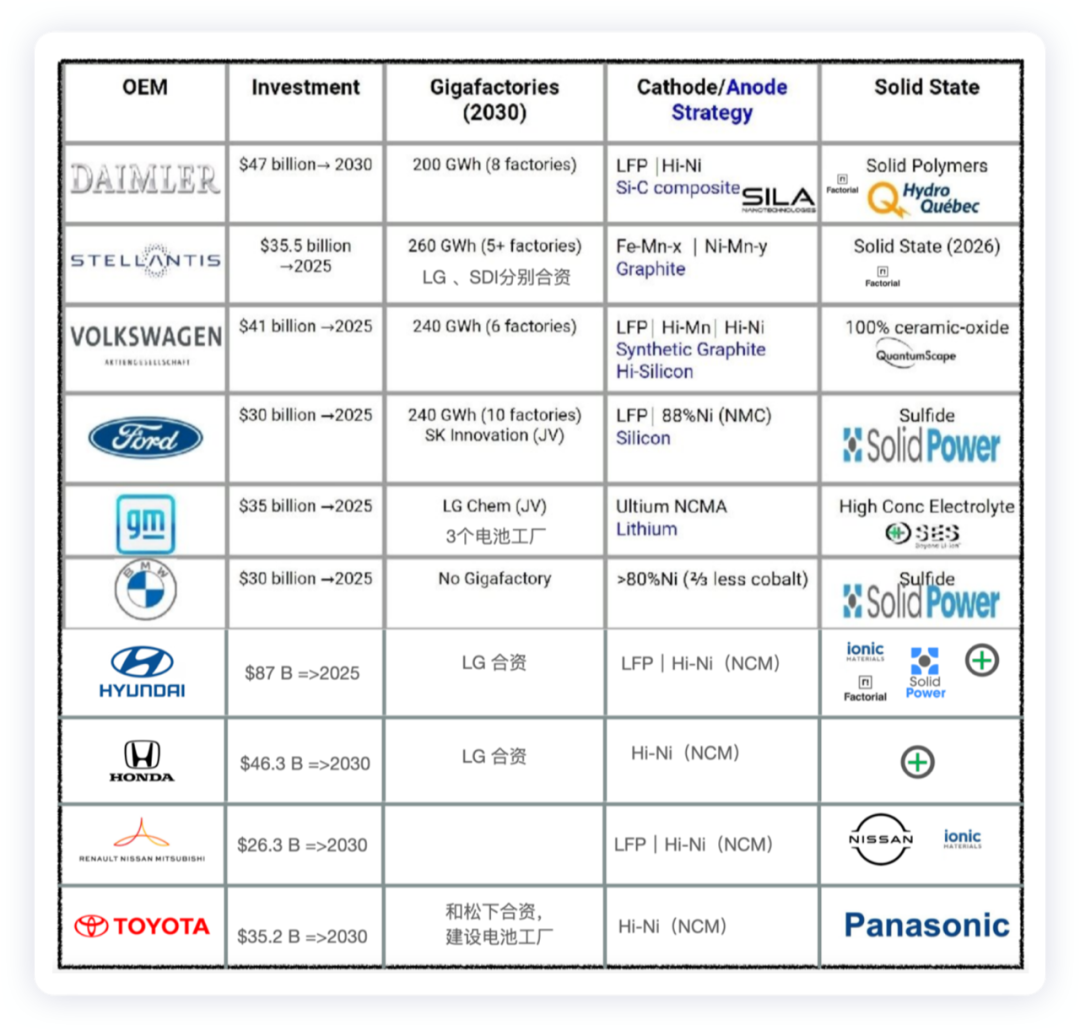 The current showcase of Beehive Energy is the development of 20Ah sulfur-based all-solid-state prototype battery cells. This series of battery cells has an energy density of ≥350Wh/kg and have successfully passed stringent experiments such as needle piercing and 200°C heating box. At present, the all-solid-state laboratory has independent research and development capabilities in kilogram-level synthesis of solid electrolyte materials, continuous preparation of solid electrolyte membranes, assembly of all-solid-state soft-packaged battery cells, and development of new equipment, while simultaneously continuing to accumulate experience and launching targeted patent layouts. It has applied for 109 patents, including 93 invention patents.
The current showcase of Beehive Energy is the development of 20Ah sulfur-based all-solid-state prototype battery cells. This series of battery cells has an energy density of ≥350Wh/kg and have successfully passed stringent experiments such as needle piercing and 200°C heating box. At present, the all-solid-state laboratory has independent research and development capabilities in kilogram-level synthesis of solid electrolyte materials, continuous preparation of solid electrolyte membranes, assembly of all-solid-state soft-packaged battery cells, and development of new equipment, while simultaneously continuing to accumulate experience and launching targeted patent layouts. It has applied for 109 patents, including 93 invention patents.
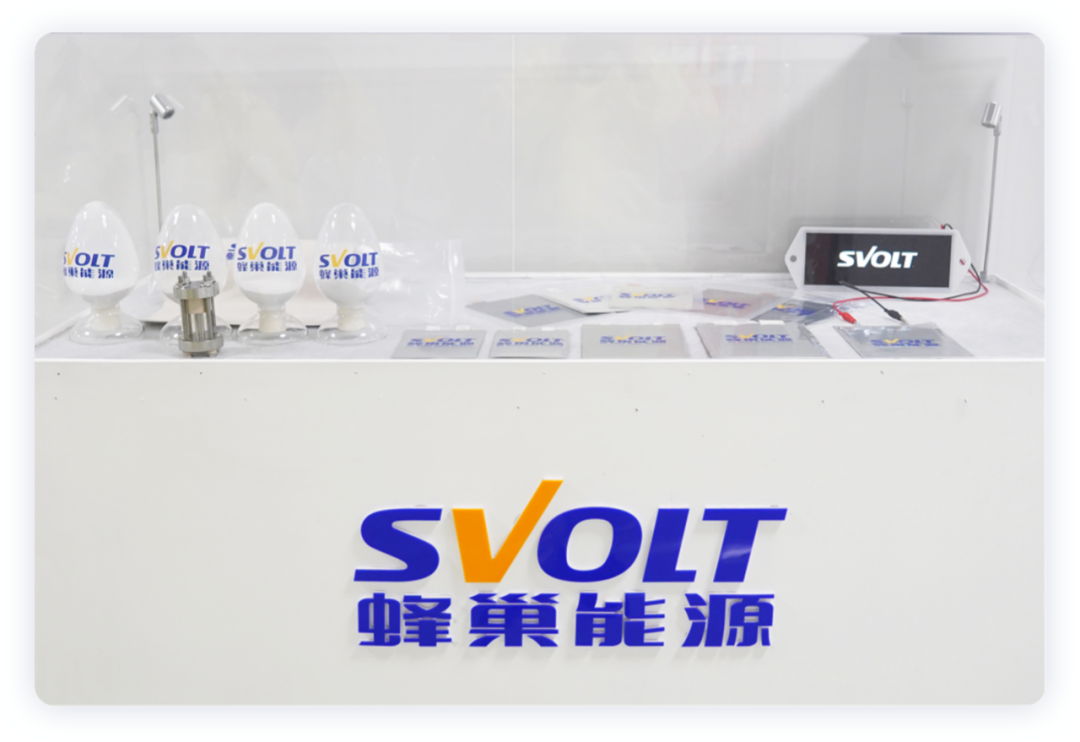
Summary: This visit was fruitful. Beehive Energy’s R&D headquarters in Wuxi is a comprehensive battery development center that includes multiple technical R&D centers such as solid-state batteries. It has established multiple R&D trial production lines, BMS laboratories, performance laboratories, and safety laboratories, providing automotive customers with research and development samples, technical services, and overall solutions. It is truly advanced.
This article is a translation by ChatGPT of a Chinese report from 42HOW. If you have any questions about it, please email bd@42how.com.
